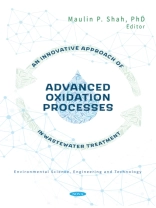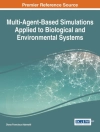In recent decades, scientific insight into the chemistry of water has increased enormously, leading to the development of advanced wastewater and water purification technologies. However, the quality of freshwater resources has continually deteriorated worldwide, both in industrialized countries and in developing countries. Although traditional wastewater technologies are focused on the removal of suspended solids, nutrients and bacteria, hundreds of organic pollutants occur in wastewater and affected urban surface waters. These new pollutants are synthetic or naturally occurring chemicals that are not often monitored in the environment but have the potential to penetrate the environment and cause known or suspected adverse ecological and/or human health effects. These contaminants are collectively referred to as the "Emerging Contaminants" and are mostly derived from domestic use and occur in trace concentrations ranging from pico to micrograms per litre. Environmental contaminants are recalcitrant for conventional wastewater treatment processes and most of them remain unaffected, leading to the contamination of receiving water. This scenario leads to the need for an advanced wastewater treatment process that can remove environmental contaminants to safely monitor fresh water sources. This book explains the technologies of biological and chemical wastewater treatment processes. The biological wastewater treatment processes presented include: (1) bioremediation of wastewater that includes aerobic treatment (oxidation ponds, aerating lagoons, aerobic bioreactors, active sludge, percolation or drip filters, biological filters, rotating biological contactors, biological removal of nutrients) and anaerobic treatment (anaerobic bioreactors), anaerobic lagoons); (2) phytoremediation of waste water consisting of engineered wetlands, rhizofiltration, rhizodegradation, phytodegradation, phytoaccumulation, Phyto transformation and hyperaccumulators; and (3) mycoremediation of wastewater. The chemical wastewater treatment processes discussed include chemical precipitation (coagulation, flocculation), ion exchange, neutralization, adsorption, and disinfection (chlorination / dechlorination, ozone, UV light). In addition, this chapter explains the wastewater treatment plants and illustrates them in terms of plant size, plant layout, and plant design and installation location.
Maulin P Shah
Innovative Approach of Advanced Oxidation Processes in Wastewater Treatment [PDF ebook]
Innovative Approach of Advanced Oxidation Processes in Wastewater Treatment [PDF ebook]
Mua cuốn sách điện tử này và nhận thêm 1 cuốn MIỄN PHÍ!
Ngôn ngữ Anh ● định dạng PDF ● Trang 319 ● ISBN 9781685073435 ● Biên tập viên Maulin P Shah ● Nhà xuất bản Nova Science Publishers, Inc. ● Được phát hành 2021 ● Có thể tải xuống 3 lần ● Tiền tệ EUR ● TÔI 8223343 ● Sao chép bảo vệ Adobe DRM
Yêu cầu trình đọc ebook có khả năng DRM












